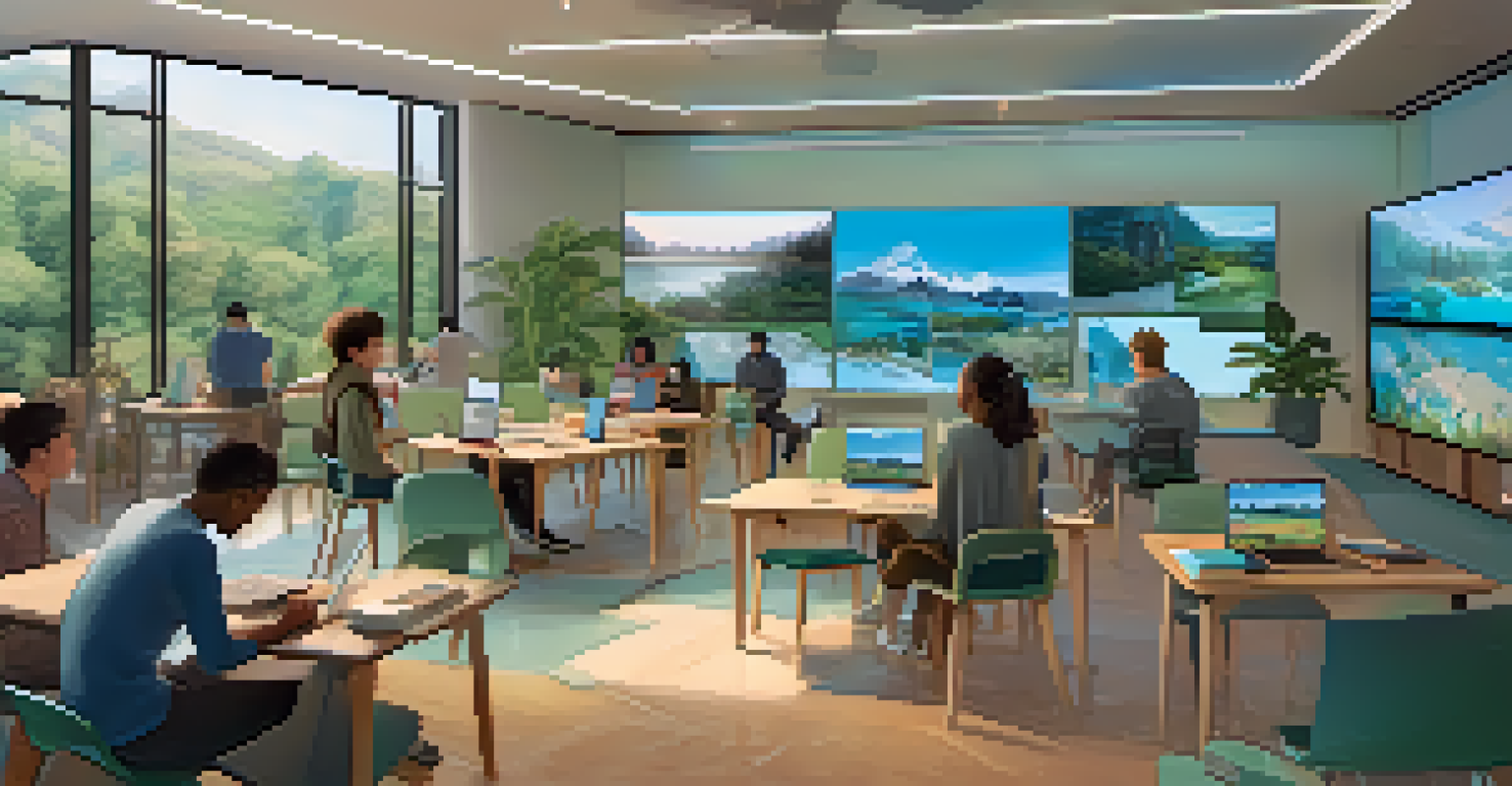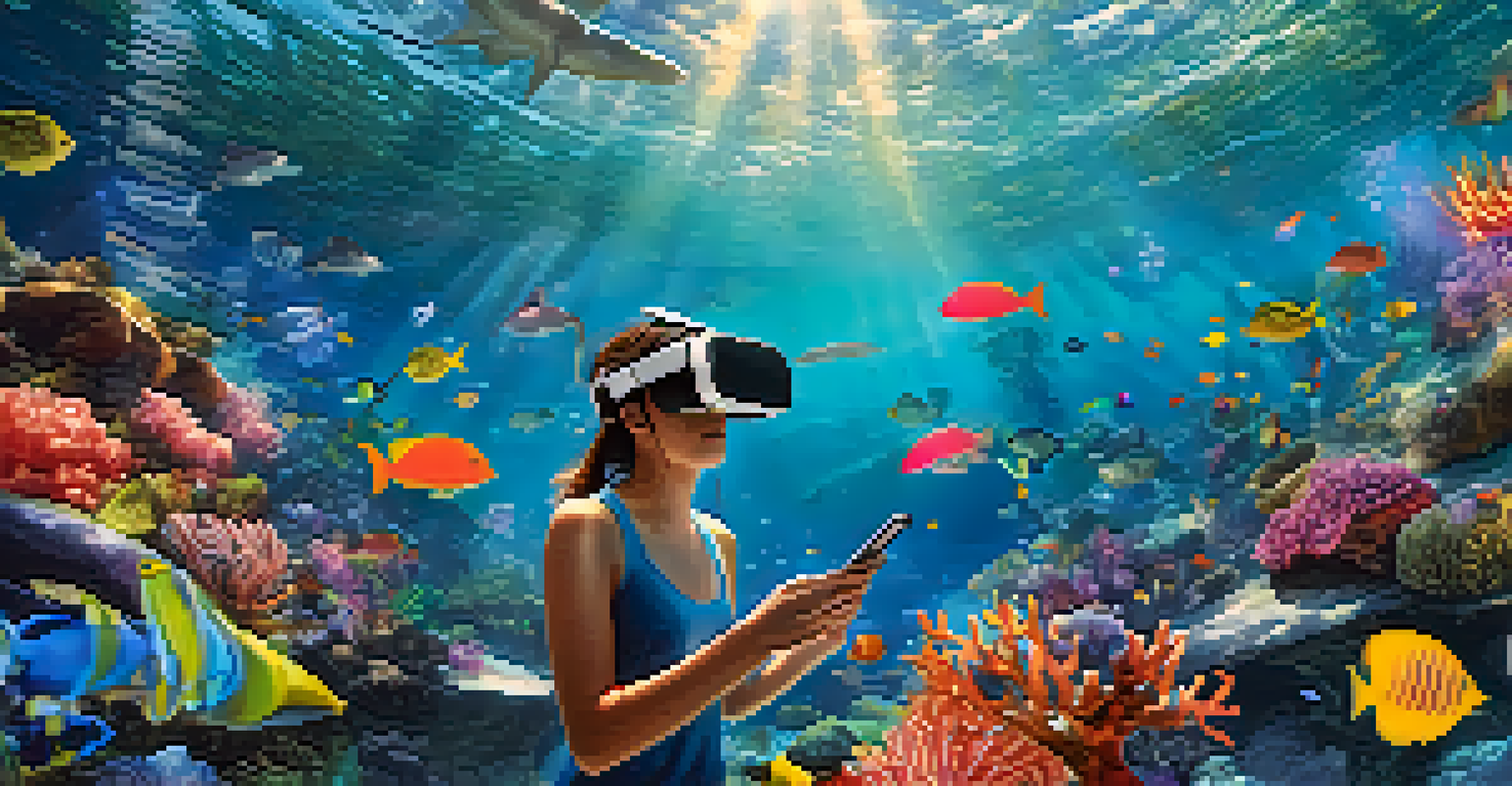Exploring the Future of Virtual Reality in Remote Education

Understanding Virtual Reality and Its Role in Education
Virtual reality (VR) immerses users in a digital environment, allowing them to interact with 3D spaces as if they were real. This technology has evolved from gaming to encompass various fields, including education. By simulating real-world scenarios, VR offers unique opportunities for remote learning that traditional methods simply can't match.
Virtual reality immerses users in a digital environment, allowing them to interact with 3D spaces as if they were real.
Imagine a student learning about ancient Rome by walking through a virtual Colosseum, experiencing its grandeur firsthand. This level of engagement can make lessons more memorable and impactful. As remote education becomes more prevalent, integrating VR can help bridge the gap between students and their learning environments.
Moreover, VR can cater to different learning styles, making it easier for educators to reach all students. Visual learners can benefit from the immersive experiences, while those who thrive on interaction can engage with their peers in a virtual classroom setting.
The Benefits of VR in Remote Learning Environments
One of the most significant advantages of using VR in remote education is increased engagement. Traditional online classes can sometimes feel detached, leading to decreased motivation. VR, on the other hand, creates an interactive atmosphere where students can actively participate in their learning.

Additionally, VR fosters collaboration among students, even if they are miles apart. Through virtual group projects or discussions, learners can share ideas in an engaging way. This sense of community can enhance the educational experience, making it feel less isolated.
VR Enhances Student Engagement
Virtual reality creates immersive experiences that significantly boost student motivation and participation in remote learning.
Moreover, VR provides access to resources that may not be available in a typical classroom. Students can explore distant planets, dive into the ocean, or even attend historical events, all from the comfort of their homes. This exposure to diverse experiences enriches their understanding and appreciation of various subjects.
Challenges of Implementing VR in Remote Education
Despite its potential, several challenges come with implementing VR in remote education. One significant barrier is the cost of VR equipment and software, which can be prohibitive for some institutions. Without access to the necessary tools, students may miss out on the benefits of this innovative learning method.
The future of remote education is bright, particularly with the integration of virtual reality.
Another challenge lies in the need for training educators on how to effectively use VR technology in their teaching. It's not just about having the equipment; teachers must also understand how to integrate VR into their curriculum. This requires time, resources, and a willingness to adapt to new teaching methods.
Lastly, there are concerns about accessibility for all students. Not everyone has a stable internet connection or a suitable device to use VR technology. Ensuring equal access remains a critical issue that educators and institutions need to address as they explore VR's potential.
The Future of VR in Remote Education: Trends to Watch
As technology continues to advance, we can expect significant trends in VR for remote education. One such trend is the development of more affordable VR solutions, making it possible for more schools and students to participate. Innovations in hardware and software will likely lead to widespread adoption in the coming years.
We can also anticipate the rise of personalized learning experiences through VR. By leveraging data and analytics, educational platforms can tailor VR content to meet individual students' needs. This customization will help maximize learning outcomes and keep students engaged.
Overcoming VR Implementation Barriers
Challenges such as cost, educator training, and accessibility must be addressed to fully realize VR's potential in education.
Finally, collaboration between tech companies and educational institutions will play a crucial role in shaping the future of VR in education. Partnerships can lead to the creation of specialized VR content that aligns with curriculum standards, ensuring that students receive a well-rounded education.
Case Studies: Successful VR Implementations in Education
Several institutions have already taken the plunge into VR education, demonstrating its effectiveness. For example, a university in California implemented a VR program that allowed nursing students to practice procedures in a simulated environment. This hands-on experience improved their confidence and skills before entering real-world scenarios.
Another inspiring case is a virtual reality platform that connects students in different parts of the world. Through this program, learners can collaborate on projects, attend lectures, and even participate in cultural exchanges. This global perspective enriches their education and fosters a sense of unity among diverse student populations.
These examples underscore the potential of VR to revolutionize remote education. As more success stories emerge, educators will likely be inspired to explore VR opportunities within their own classrooms.
How Students Can Benefit from VR in Remote Learning
Students stand to gain immensely from the integration of VR in remote learning. For starters, they can experience new concepts in a way that feels tangible, enhancing retention and understanding. When lessons are engaging, students are more likely to stay motivated and invested in their education.
Moreover, VR can help students build essential skills for the future. Many industries are beginning to incorporate VR technology, so familiarity with this tool can give students a competitive edge in their careers. By utilizing VR in education, they can become more adaptable and innovative problem solvers.
Future Trends in VR Education
The development of affordable VR solutions and personalized learning experiences will shape the future of remote education.
Lastly, VR promotes self-directed learning, empowering students to explore topics that interest them. This autonomy can lead to a greater passion for learning, as students engage with material that resonates with their personal goals and aspirations.
Conclusion: Embracing VR for a New Educational Era
The future of remote education is bright, particularly with the integration of virtual reality. By providing immersive and engaging experiences, VR can transform how students learn and interact with their peers. As educators and institutions continue to explore this technology, the possibilities are endless.
It's essential, however, to address the challenges that come with implementing VR. By working together to overcome barriers like cost and accessibility, we can ensure that all students benefit from this innovative learning tool. The goal should be to create an inclusive environment where everyone has the opportunity to thrive.

In embracing VR, we are not just enhancing education; we are preparing students for a world that increasingly relies on technology. As we look to the future, let's harness the power of virtual reality to inspire the next generation of learners.